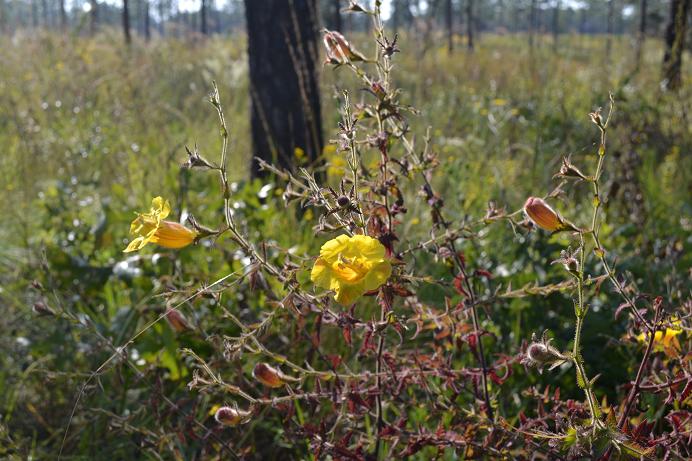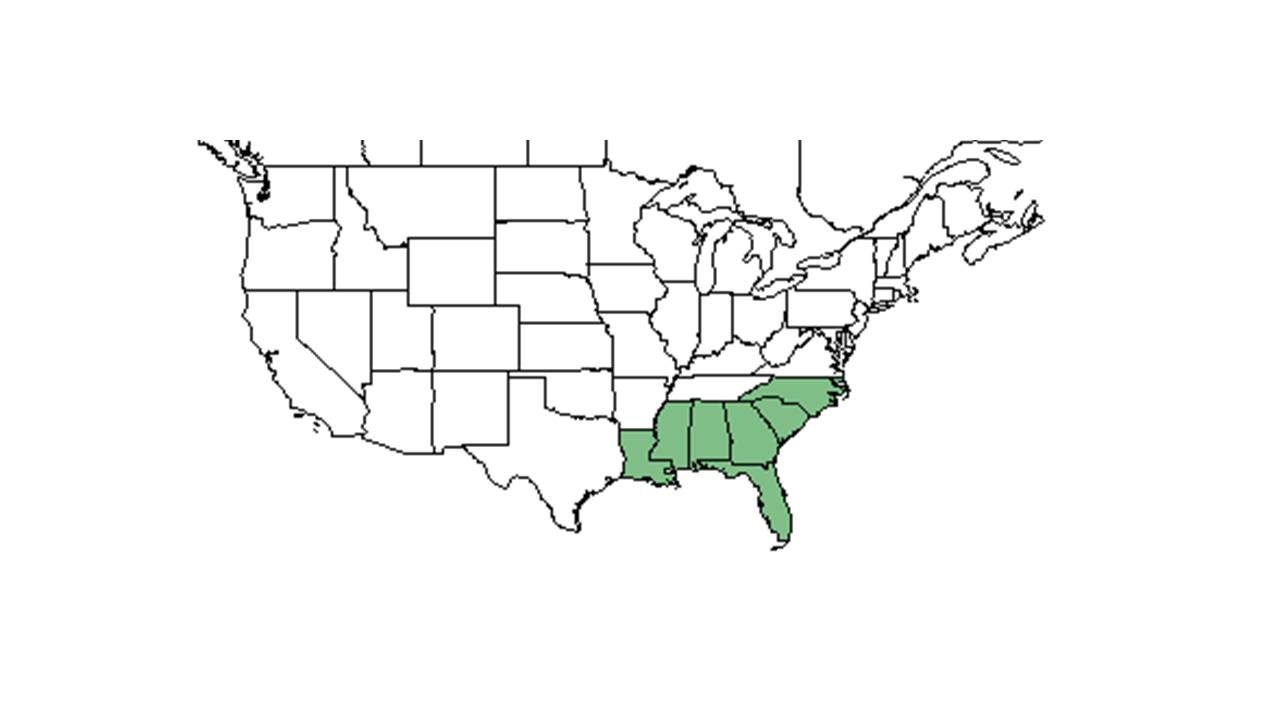Difference between revisions of "Seymeria pectinata"
KatieMccoy (talk | contribs) |
KatieMccoy (talk | contribs) (→Distribution) |
||
| Line 25: | Line 25: | ||
==Distribution== | ==Distribution== | ||
| − | + | ''S. pectinata'' is much more restricted in its distribution than ''S. cassioides'' however has a broader host range. It often prefers drier sites than ''S. cassioides'' and on occasion can be found growing together. There is no evidence of hybridization between the two species (Musselman and Mann 1978). | |
==Ecology== | ==Ecology== | ||
Revision as of 15:46, 7 October 2015
| Seymeria pectinata | |
|---|---|

| |
| Photo taken by Kevin Robertson | |
| Scientific classification | |
| Kingdom: | Plantae |
| Division: | Magnoliophyta – Flowering plants |
| Class: | Magnoliopsida – Dicotyledons |
| Order: | Scrophulariales |
| Family: | Scrophulariaceae |
| Genus: | Seymeria |
| Species: | S. pectinata |
| Binomial name | |
| Seymeria pectinata Pursh | |

| |
| Natural range of Seymeria pectinata from USDA NRCS Plants Database. | |
Common name: piedmont blacksenna, combleaf seymeria
Contents
Taxonomic notes
Description
S. pectinata can grow up to 75 centimeters tall, covered with stiff nonglandular hairs and is stiffly branched with the longest branches occurring at the base. Seed capsules are ovoid covered with glandular hairs and flowers are around 1 centimeter long and yellow with hairs (Musselman and Mann 1978).
Distribution
S. pectinata is much more restricted in its distribution than S. cassioides however has a broader host range. It often prefers drier sites than S. cassioides and on occasion can be found growing together. There is no evidence of hybridization between the two species (Musselman and Mann 1978).
Ecology
Habitat
In the Coastal Plain in Florida and Georgia, S. pectinata can occur in open woodlands, flat longleaf pine-wiregrass communities, sand live oak groves, and sandridges (FSU Herbarium). It also occurs along roads. Soils include sandy soil and loamy sand (FSU Herbarium).
Phenology
Flowers and fruits in September (FSU Herbarium).
Seed dispersal
Seed bank and germination
Fire ecology
Pollination
Deyrup conducted a study and observed these bees, Augochlorella aurata, Augochloropsis sumptuosa, Dialictus placidensis, Anthidiellum notatum rufimaculatum, A. perplexum, Coelioxys sayi, Megachile brevis pseudobrevis, M. mendica, M. petulans, and Bombus impatiens, on S. pectinata (2002).
The following Hymenoptera families and species were observed visiting flowers of Seymeria pectinata at Archbold Biological Station (Deyrup 2015):
Halictidae: Augochlorella aurata, Augochloropsis sumptuosa, Lasioglossum placidensis
Megachilidae: Anthidiellum notatum rufomaculatum, Anthidiellum perplexum, Coelioxys sayi, Megachile brevis pseudobrevis, M. mendica, M. petulans
Use by animals
Diseases and parasites
Conservation and Management
Cultivation and restoration
Photo Gallery
References and notes
- Deyrup, M.A. and N.D. 2015. Database of observations of Hymenoptera visitations to flowers of plants on Archbold Biological Station, Florida, USA.
- Deyrup, Mark, Jayanthi Edirisinghe, and Beth Norden. 2002. The Diversity and Floral Hosts of Bees at the Archbold Biological Station, Florida (Hymenoptera: Apoidea). Insect Mundi 16.1-3: 87-120.
- Florida State University Robert K. Godfrey Herbarium database. URL: http://herbarium.bio.fsu.edu. Last accessed: July 2015. Collectors: Loran C. Anderson, R. A. Norris, Robert K. Godfrey, Cecil R Slaughter. States and Counties: Florida: Duval, Franklin, Gadsden, Leon, Liberty, Madison. Georgia: Grady, Thomas. Compiled by Tall Timbers Research Station and Land Conservancy.
- Musselman, Lytton J., and William F. Mann, Jr. "Root Parasites of Southern Forests." Southern Forest Experiment Station (1978.